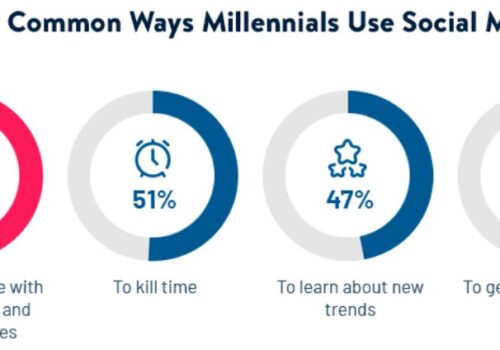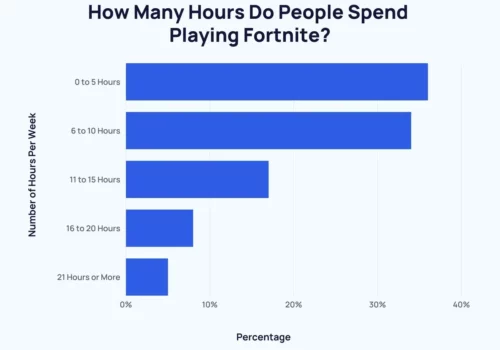Nonprofits are a diverse group of organizations that include philanthropic institutions, social welfare organizations, civic leagues, and social advocacy groups.
Despite their differences, they all share one thing in common: they are a positive force in our world. Nonprofits work on a wide range of issues, from animal welfare to arts and culture.
Let’s explore the world of nonprofit organizations, including how many there are and what they do.
Nonprofits are essential to our communities and society. Let’s analyze the impact and challenges of these contributions through statistics and insights.
| Category | Past Years Statistics | Recent Years (2022-2023) Statistics |
|---|---|---|
| Nonprofit Organizations | 1.5 million in the U.S. | Growth rate of 1.3889% annually to 1.54 million in the U.S. |
| Nonprofit Workforce | Employ 10% of the U.S. workforce; 7.4% of the worldwide workforce | 86% report difficulty in retaining employees; 10% turnover rate increase compared to 2020 |
| Financial Contribution | 5.7% of U.S. GDP; Total annual revenue of $2.62 trillion | Decline in total giving from $516 billion in 2021 to $499 billion in 2022 |
| Donations | 56% of Americans donated in 2021; Avg. donation $574 | Monthly giving rose by 11%; One-time donations declined by 12%; Avg. one-time gift was $192; Avg. monthly gift was $287 |
| Generational Giving | Baby Boomers and Gen X significant contributors | Baby Boomers: Avg. annual gift of $1,212; Silent Generation: Avg. annual gift of $1,367; Millennials: Avg. annual donation of $481 |
| Online Giving Trends | Online donations to environmental and human rights causes grew significantly | Online giving increased by 12.1% in 2021; Peer-to-peer fundraising surpassed $1 billion in 2022 |
| Government Grants | 80% of nonprofit revenue from government grants and contracts | Economic challenges influencing the drop in giving; focus on foundation giving increasing |
| Volunteerism | 25.1% of U.S. adults volunteered in 2017 | Approximately 63 million Americans volunteer their time, talents, and energy |
| Fundraising Trends | Email marketing accounted for 28% of all nonprofit revenue in 2017 | Diversified communication and virtual events are on the rise; Email marketing is still significant |
Nonprofit Statistics & Facts In General
Image Credit: Pexels
Facts and Figures on Nonprofits and Marketing
- Volunteers are 200 percent more likely than non-volunteers to make a donation.
- Nonprofit marketing not only attracts funds but also volunteers.
- A mobile device is used to make nearly one-third of all internet donations.
- 79 percent of donors use online videos to assist them in deciding whether or not to give.
- Two-thirds of NGOs are concerned about missing out on digital opportunities.
- In 2018, one-third of NGOs spent money on social media marketing.
- Facebook accounts for 18% of all donations worldwide.
- Emails sent to nonprofit organizations have had an open ratio of 15 to 17 percent.
- People under the age of 55 are 40 percent more inclined to volunteer.
- Two-thirds of volunteers in the United Kingdom are women.
- In the United States, the typical donor is 64 years old.
- 27 percent of people are more inclined to contribute non-cash assets.
- During the first year, nonprofit organizations should expect a 25 percent retention rate.
- The third largest employer in the U.S., behind retail and manufacturing.
- Added an estimated $1.5 trillion to the U.S. economy in Q3 2022.
- Globally, there are over 10 million nonprofit organizations.
Stats on Nonprofits and Employment
- Nearly 63 million Americans volunteered for NGOs in 2018.
- In monetary terms, volunteer hours totaled about $188 billion in 2016.
- On average, people donate 52 hrs of their time annually.
- In 2013, the nonprofit sector received $8.9% of all salaries and earnings, totaling $634 billion.
- In the United States, the nonprofit sector provides employment to just under 12 million people.
Donations to Nonprofits:
- 56% of Americans donated to charity in 2021, a slight increase from pre-pandemic levels.
- Baby boomers and Gen Z are notably generous, with high donation rates.
- 45% of global donors participate in monthly giving programs.
- Individual donations account for only 10% of nonprofit revenue; the majority comes from government grants and contracts.
- Donors are incentivized to give more due to tax benefits, with 89% of wealth in non-cash assets.
- The average charitable donation was $574 in 2021.
- Online giving rose by 12.1% in 2021.
- Environmental and human rights donations saw substantial growth.
- Steady growth in donations over the past six years.
- Nonprofit numbers and revenue have grown annually at 1.3889% and 7.989%, respectively.
- In 2022, the top 30 peer-to-peer fundraising programs surpassed $1 billion, marking an 18.8% increase over 2021. This, however, was still lower than the peak of $1.37 billion in 2019.
- There has been a shift in online giving patterns. While one-time donations declined by 12% year-over-year, monthly giving rose by 11% and accounted for 28% of online giving. The average monthly gift amounts to $287 across the year, compared to an average one-time gift of $192.
FAQs
📊 How effective are nonprofits in achieving their goals?
Effectiveness is key, and I wanted to know how well nonprofits are doing in reaching their goals. The statistics here are quite inspiring and show the impact these organizations have.
🌍 Which sectors do most nonprofits focus on?
Ever wondered what areas nonprofits mostly work in? I found out that they cover everything from education to healthcare. It's amazing to see the diversity in their focus areas!
🏠 Why do many U.S. entrepreneurs start their firms at home?
A large number of U.S. entrepreneurs, specifically 69%, start their firms at home, likely due to the cost-effectiveness and flexibility it offers.
📈 What leads to the profitability of many startups?
About 40% of startups become profitable, indicating that a significant number manage to effectively find market fit and utilize their resources well.
🌟 What does the high monthly expenditure signify for Series A startups?
The fact that 47% of Series A startups spend over $400k per month indicates the scale of investment needed for growth and development at this stage.
Quick Links:
- Top Email Marketing Statistics To Consider: The Ultimate List of Email Marketing
- Social Media Statistics You Need To Know: What Percentage Of People Use Social Media?
- Mobile eCommerce Statistics: Emerging Online Shopping Trends
- Instagram Statistics That You Should Know
Conclusion: Nonprofit Statistics 2024
Statistics about nonprofits reveal that this sector is vibrant, diverse, and crucial in addressing a wide range of social, educational, and health-related issues.
Nonprofits rely on volunteers, and their economic contribution and challenges, such as funding and competition, make them a vital and resilient sector.
The growth in the number of nonprofits and their impact on communities across the globe highlights the increasing role that they play in our society.
This data not only helps us appreciate the significance of nonprofits but also emphasizes the importance of supporting and sustaining them for the betterment of our communities and society as a whole.
Sources: Prosper Strategies, Foundation Group, Finances Online, HubSpot, Westerlund. co, National Council of Nonprofits, Planned Giving, Statista, Brighter Strategies, G2






